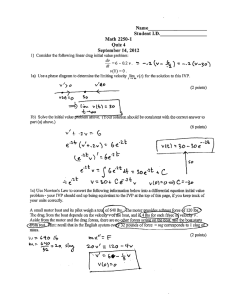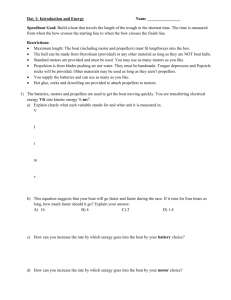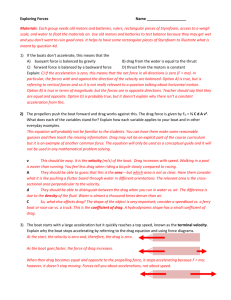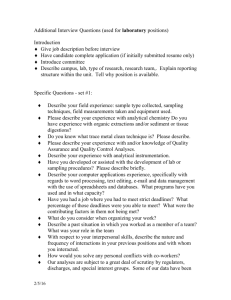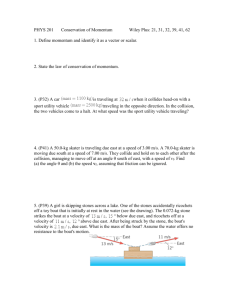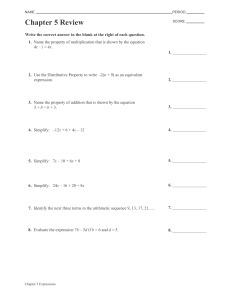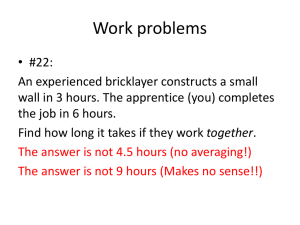2 speedboat forces student final edit
advertisement
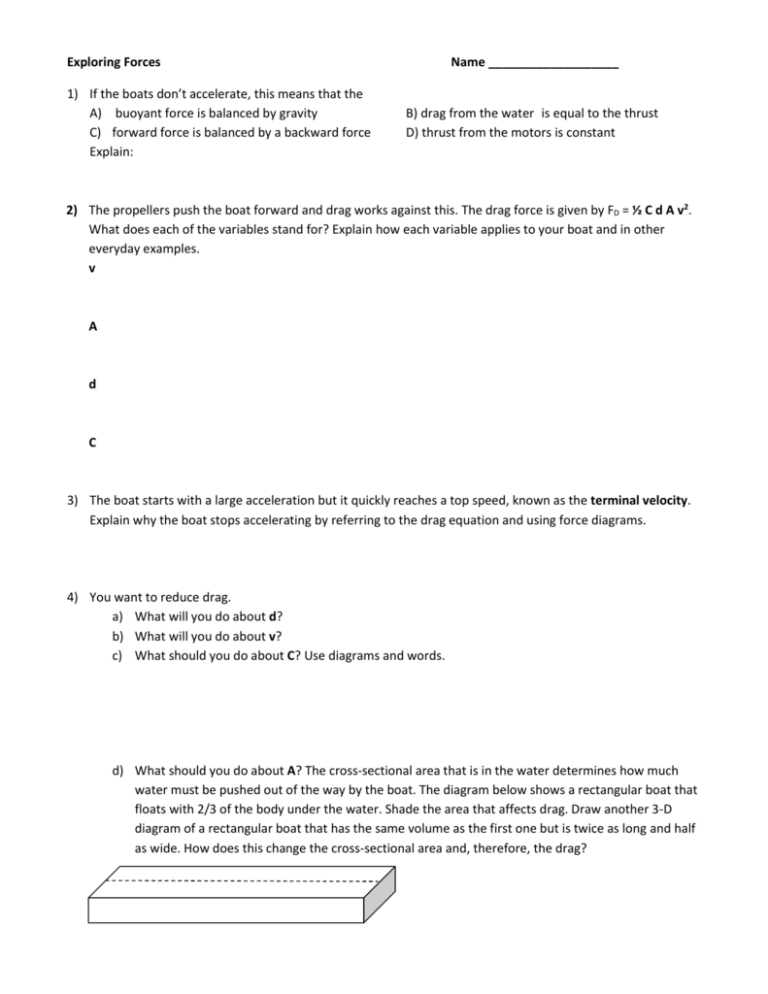
Exploring Forces 1) If the boats don’t accelerate, this means that the A) buoyant force is balanced by gravity C) forward force is balanced by a backward force Explain: Name ___________________ B) drag from the water is equal to the thrust D) thrust from the motors is constant 2) The propellers push the boat forward and drag works against this. The drag force is given by FD = ½ C d A v2. What does each of the variables stand for? Explain how each variable applies to your boat and in other everyday examples. v A d C 3) The boat starts with a large acceleration but it quickly reaches a top speed, known as the terminal velocity. Explain why the boat stops accelerating by referring to the drag equation and using force diagrams. 4) You want to reduce drag. a) What will you do about d? b) What will you do about v? c) What should you do about C? Use diagrams and words. d) What should you do about A? The cross-sectional area that is in the water determines how much water must be pushed out of the way by the boat. The diagram below shows a rectangular boat that floats with 2/3 of the body under the water. Shade the area that affects drag. Draw another 3-D diagram of a rectangular boat that has the same volume as the first one but is twice as long and half as wide. How does this change the cross-sectional area and, therefore, the drag? 5) Conclusion: The length of your boat should be A) as long as possible B) as short as possible Explain: C) a compromise 6) Conclusion: The mass of your boat should be A) as large as possible B) as small as possible Explain: C) a compromise 7) You should calculate roughly how much Styrofoam you need to float the motor and batteries. You can assume that the mass of the Styrofoam itself is negligible. Hint: The density of water is 1g/cm3. a) What is the mass of a 9-V battery? b) What is the mass of each motor type? c) What is the smallest volume of Styrofoam that can just float the heaviest motor and two 9-V batteries? d) You want to use more than this minimum amount of Styrofoam. Explain why. e) Use your chosen length and the smallest volume of Styrofoam to determine the cross-sectional area of your boat. Assume that the hull is a simple rectangle. 8) Try floating some old batteries on Styrofoam. How wide should the boat be? Explain. 9) Use the calculated area from question 7 and draw - exactly to scale - what the front view of your boat hull will look like.
